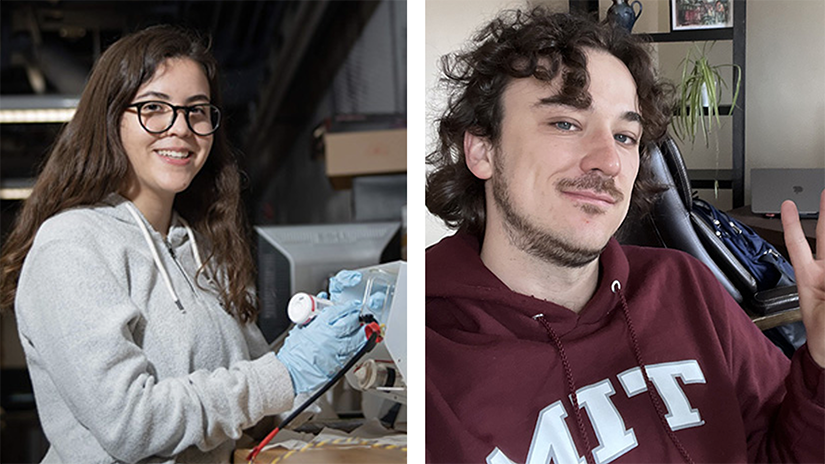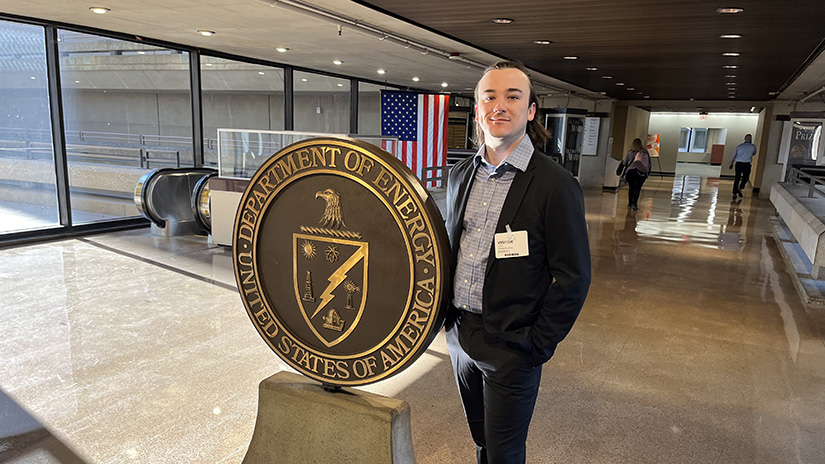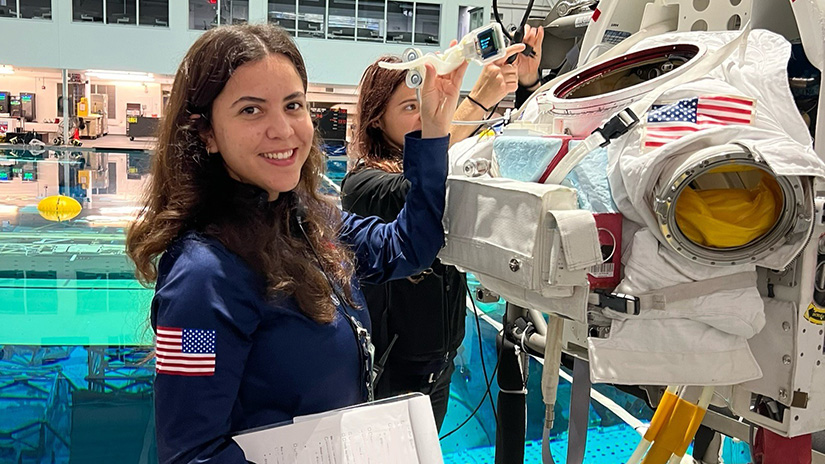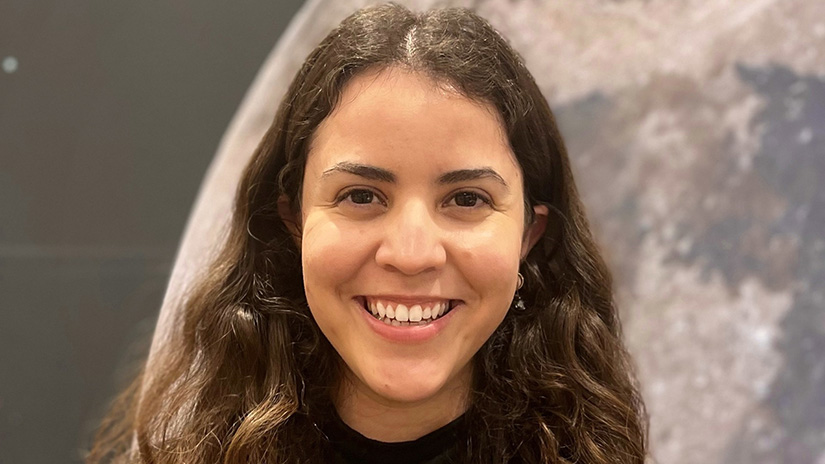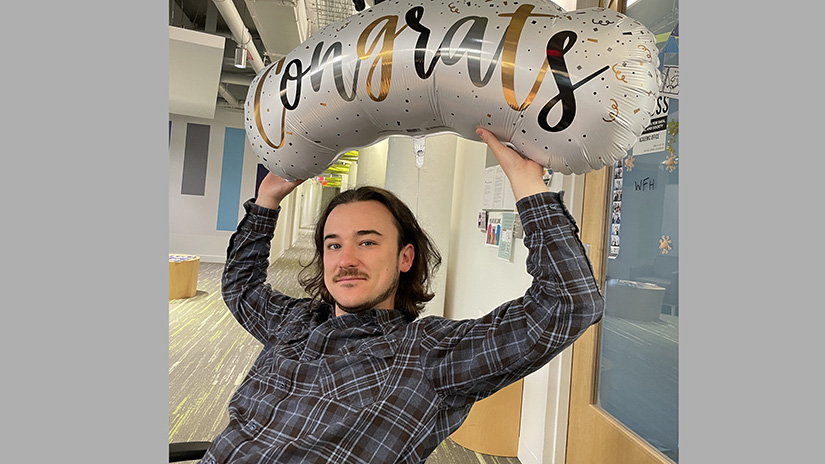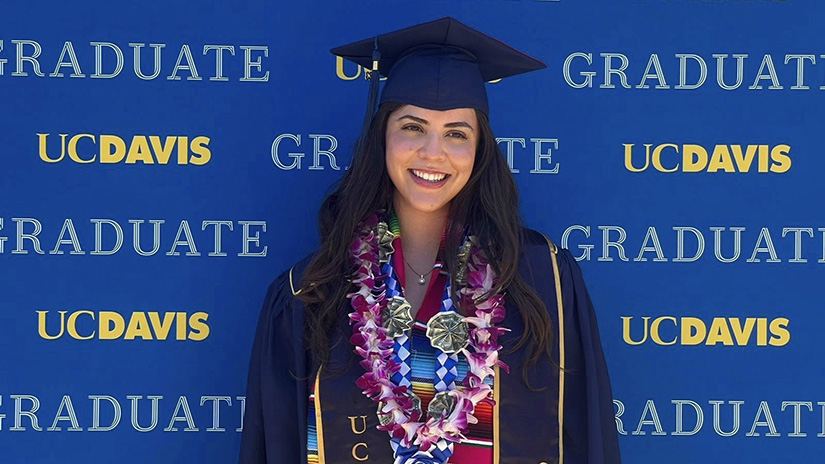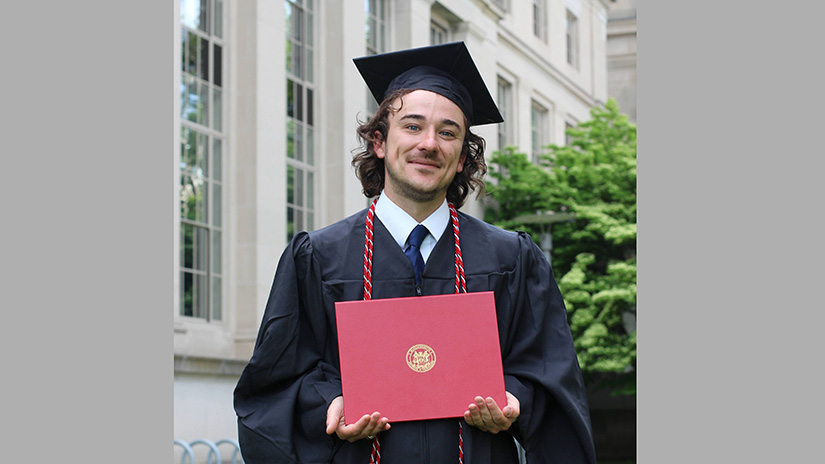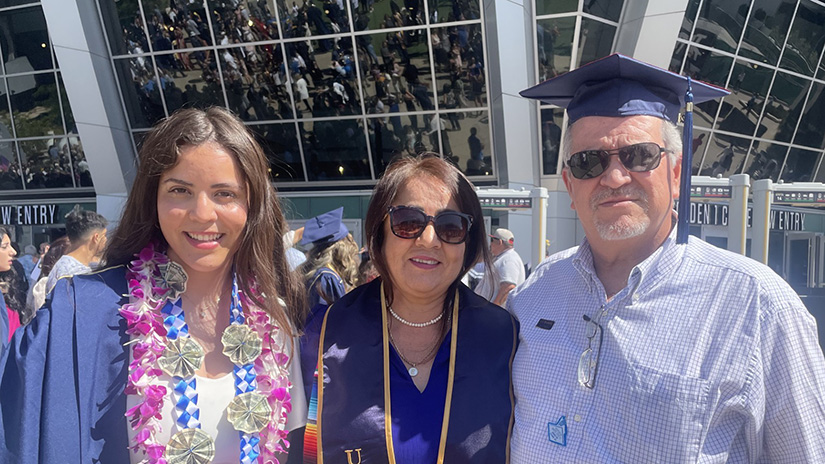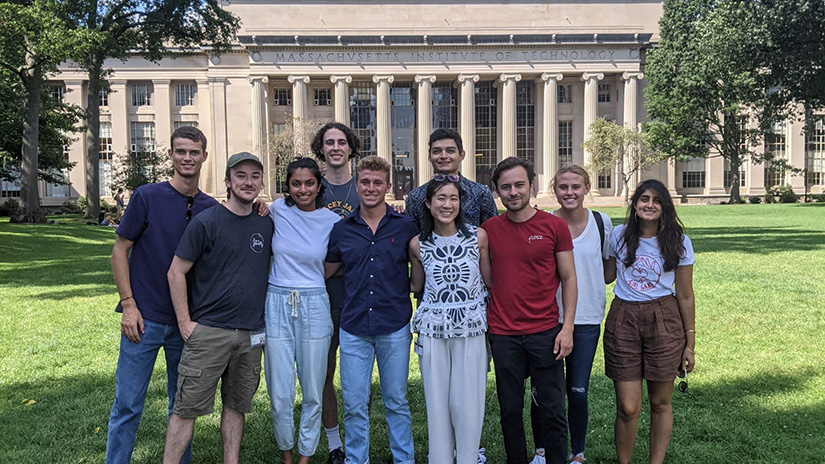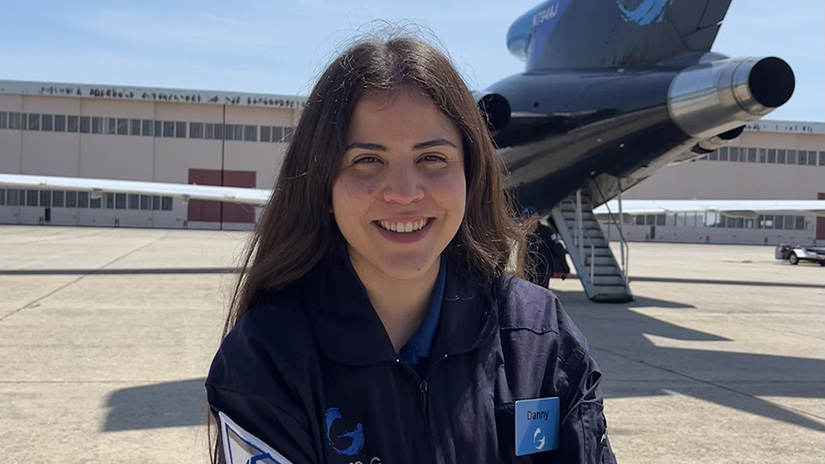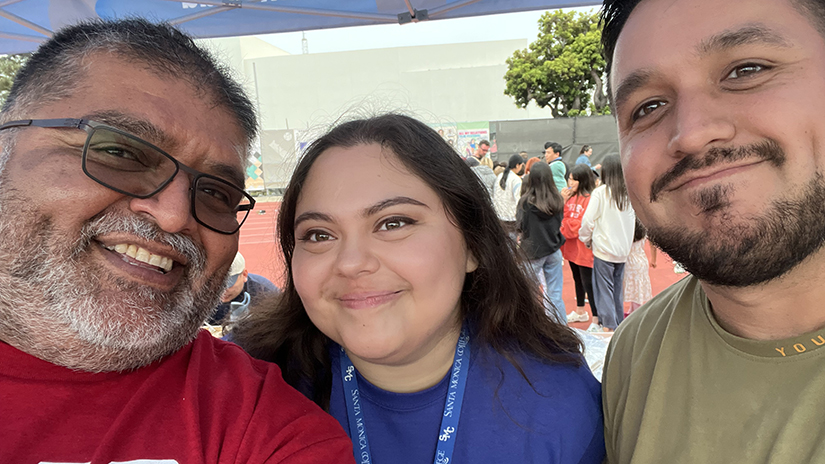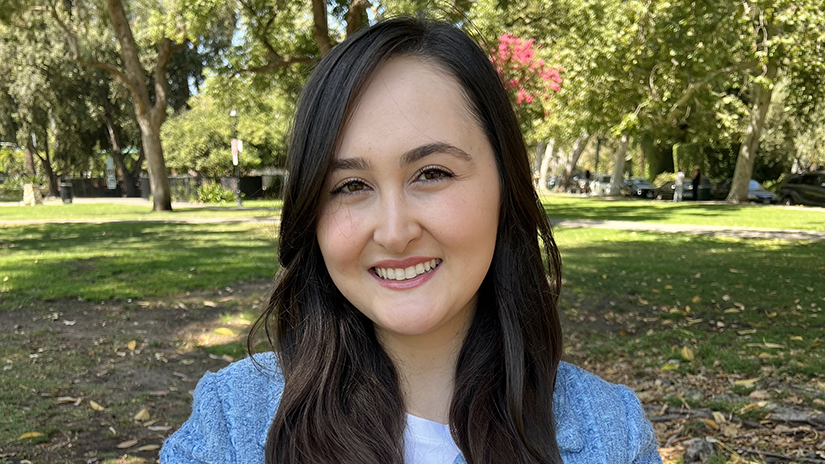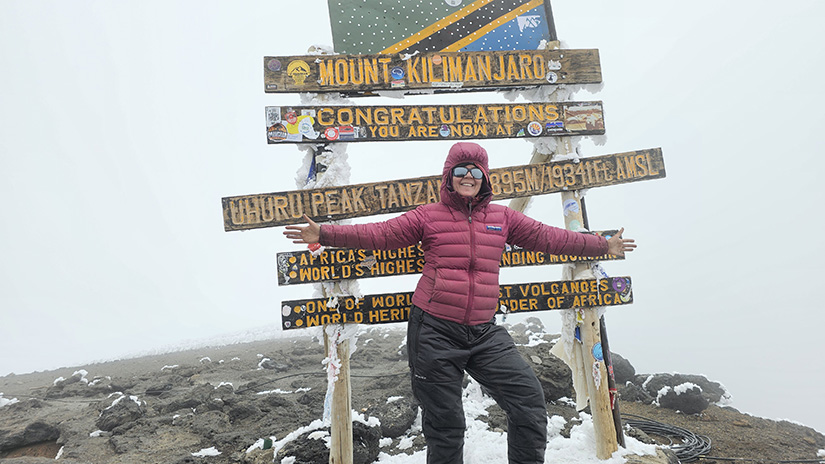
The world-renowned Massachusetts Institute of Technology, which admits less than 4 percent of applicants, now includes two recent Santa Monica College alumni on its roster of students and graduates — Daniela “Danny” Davalos and Les Armstrong.
This year, Les completed dual Master of Science degrees in technology and policy and electrical engineering and computer science. He wants to blend those skills to help mitigate climate change on multiple fronts. While at the university, he served as a graduate researcher for the MIT Energy Initiative, a hub of research, education and outreach addressing the crisis. He also recently co-wrote an article for the prestigious Science magazine.
Meanwhile, Danny is in her second year as a master’s student in MIT’s Department of Aeronautics and Astronautics, popularly known as “AeroAstro.” She focuses on bioastronautics, which integrates biology, medicine and engineering to make long-term space travel safer and healthier.
“We’re studying how the stressful conditions of spaceflight affect the human cardiovascular and musculoskeletal systems,” Danny explains. “For example, when astronauts are in space for a long time, their bones start to weaken, so we need to develop countermeasures to neutralize such effects.”
Danny and Les both credit SMC with helping make their academic and professional journeys possible. “I never thought I’d be able to go to MIT,” Les says. “So I’m really grateful for SMC and its faculty for the foundation and opportunities they provided.”
Scientific Approaches
Danny, whose parents emigrated from Mexico, is a first-generation college student. In high school, a teacher noticed her curiosity about how things worked and suggested she join the academic program Mathematics, Engineering, Science Achievement. After school each day, she and peers would engage in projects from robotics to constructing weight-bearing balsa wood bridges and building cases able to shield eggs from six-story drops.
“That’s what introduced me to engineering,” Danny recalls. And she thought an education at SMC could help her identify which aspect of the field most appealed to her. She knew about the college because it had set her two older sisters on paths to careers in respiratory therapy and the legal field.
“It’s also a lot cheaper to go to SMC,” admits Danny, who had been accepted into some well-known universities only to be turned off by their daunting tuition costs.
Les’ trajectory to SMC covered a much wider geography. Born in Venice, Calif., to an American father and a mother who emigrated from Argentina, he had always been interested in science and math. When he was 8, though, the family moved to his mom’s native country and her home city of Buenos Aires. “I lived there until I was 20, and even started college there,” he says.
While growing up, Les developed a passion for physics but felt conflicted about a career in engineering. “I was becoming very aware of climate change and its impacts,” he recalls. “And I felt that all the engineers I knew were working on projects that were basically part of the problem. I didn’t want to be the person working on a slightly better fridge or slightly bigger car.”
Knowing that California was a leader in moving toward a carbon-neutral future, Les resolved to return to his home state to continue his academic career. But then he realized how the admissions policies of American universities differ from Argentina’s.
“I hadn’t taken anything like the SATs, because they’re not offered there,” Les explains. His father urged him to check out the state’s community college system. Doing some research, Les found out about the Transfer Admission Guarantee that allows qualifying college students to transfer to institutions including the University of California and Cal State University. “SMC really offers these great onramps for nontraditional college students like myself,” Les adds.
He also learned that SMC had the highest transfer rates to the University of California system, USC, and Loyola Marymount University.
STEM to Success
Although their paths did not cross at SMC, Danny and Les each quickly became involved in the college’s STEM Program (opens in new window) . They found inspiration from the program’s Project Manager Vanan Yahnian and her commitment to unlocking opportunities for students from underserved communities to increase diversity in fields related to science, technology, engineering and mathematics.
“SMC’s STEM Program gave me a sense of community and is where I met a lot of my friends,” Danny says. Les agrees, adding that he found the program’s resources for students — which include tutoring and peer mentoring — to be incredibly valuable.
Danny became a STEM tutor and peer mentor, conducting workshops and helping design support materials for students. Les took a job in Supplemental Instruction (SI) (opens in new window) , an SMC academic support program that engages groups of students taking particular courses in activities to boost their study skills and understanding of the material. He was soon promoted to the position of SI peer mentor.
Danny and Les also took advantage of the internship opportunities (opens in new window) offered to SMC STEM Program participants. Danny interned with the Los Angeles World Airports Planning & Development Group, which operates LAX, while still a first-year student. Then, through the Base 11 Summer Fellowship, she conducted research at Caltech under the direction of a faculty member who is a physicist and aerospace engineer.
“One of the projects that I did with her was creating a simulation of an underwater robot for the development of autonomous navigation,” Danny says. Later, she was once again able to join the professor’s research team.
Les interned for two summers at NASA’s Jet Propulsion Laboratory, working on an X-ray fluorescence spectrometer that was mounted on Perseverance, the rover launched to Mars in 2020. “I was involved in finding ways to calibrate the instruments,” Les says.
To this day, Perseverance is still reporting data back from its analysis of Martian rocks and soils.
Current Trajectory
Danny transferred from SMC to the University of California, Davis, where she completed her bachelor’s degree in aerospace and mechanical engineering. While there, she worked in its Human/Robotics/Vehicle Integration and Performance Laboratory, which is devoted to technological innovations for keeping people safe in situations from airplane emergencies to rocket flights.
The experience enabled her to learn from a professor who was a former astronaut. “He opened a lot of doors for me,” Danny says — including an opportunity to take part in research for NASA’s Neutral Buoyancy Laboratory. “I worked on a helmet-mounted display project for astronaut underwater training,” she explains.
After finishing her master’s at MIT next year, Danny plans to pursue a PhD. “I hope to work with NASA or SpaceX,” she says. Then, eventually, she might turn to teaching new generations of bioastronautics innovators.
“I want to let people know that, with perseverance and a system of family and friends, you can get to wherever you want to be,” she adds. After all, she and Les are living proof of that.
Les’ path took him to UC Santa Barbara, where he earned a bachelor’s in physics. A professor in the Environmental Studies department, an expert in energy and climate, was so impressed that he quickly put Les to work in his research group.
“That’s how I got my foot in the door of that world,” Les says of environmental engineering. But even though his newfound mentor opened that access, “I don’t think that would have happened if I hadn’t first gotten the opportunity at JPL — which was due to SMC,” he notes.
With dual master’s degrees in hand, Les has started working at the Boston office of San Francisco-based consulting company E3—Energy and Environmental Economics Inc. Eventually, though, he would like a career in the public sector. “I really want to help cities or states with their energy transition,” he says.
Despite their shared SMC backgrounds, Danny and Les have yet to meet in person. But Les hopes they can find some time amid their busy schedules to have coffee. “It was nice to see somebody else from SMC coming to MIT,” he says. “It fills my heart.”
* * *




